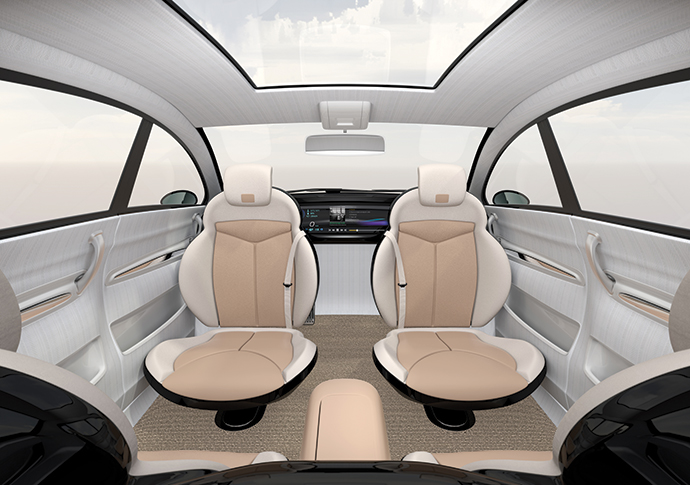For most of the last century, three companies have dominated the American automotive landscape — Ford, GM and Chrysler — and all three are synonymous with Detroit.
But a funny thing happened on the way to the 21st century. Americans, whose love affair with the automobile built Detroit into the manufacturing capital of the United States, began changing their attitudes toward cars and driving a few years ago, and now the future of personal transportation looks completely different than it did in 1999.
Today, an increasing number of Americans say they would rather share a ride than drive their own vehicle; and many of these Americans say they’d be fine riding in a vehicle operated by computers.
According to a recent survey by ReportLinker, more than 60 percent of Americans say they are either somewhat or very positive about autonomous cars — and 72 percent say that they would like the next car they buy to be either fully or partially automated.
Contrary to popular belief just one year ago, autonomous vehicles are no longer the realm of science fiction. Today they are science fact, and no state embraces that technology more than California.
Case in point: on September 30, the California Department of Motor Vehicles released regulations that will allow companies more leeway in testing the operation of self-driving cars on public roadways.
It is but the latest sign that California is not just changing the way the world moves from Point A to Point B; it is ready to dominate every industry involved in personal transportation.
With firms like Tesla, Google and Uber leading the way, the California autonomous vehicle industry is colliding with the California ride-sharing industry and threatening to completely supplant Detroit as the automotive capital of the world.
Silicon Valley, which introduced the world to the personal computer, is about to introduce every American to the experience of a shared, automated ride.
Already, 15 companies in California have permits to operate autonomous vehicles on public California roadways as long as there is a licensed vehicle driver inside the car.
Even as California paves the way for more driverless cars, San Francisco-based ride-sharing giant Uber — a $68-billion company with 6,700 employees worldwide — is poised to become the leader in self-driving trucks. Its drivers operate in over 500 cities worldwide.
After recently acquiring San Francisco-based autonomous truck startup Otto for $680 million, Uber announced plans to enter the highly competitive business of long-haul trucking.
A $700-billion-a-year industry, trucking could become a major source of revenue for Uber, which separately had announced that it planned to deploy a fleet of autonomous ride-sharing cars by 2030.
Uber already dominates the taxi industry in New York City. According to taxi industry data, Uber accounted for more than a million rides in Brooklyn in July, while Green Taxi
accounted for about 500,000 and Lyft accounted for another 250,000 or so.
Lyft, which is also based in San Francisco, is valued at $5.5 billion and currently operates in more than 200 US cities.
Meanwhile, electric car manufacturer Tesla shows no signs of slowing down anytime soon. One of the first companies to introduce self-driving vehicles to the road, the Palo Alto-based company today is valued at more than $33.5 billion and employs 14,000 workers, most of whom work in California.
Its most recent expansion occurred in Lathrop, California, where the firm founded by Elon Musk signed a lease for 430,000 sq. ft. of manufacturing space in western San Joaquin County.
Tesla also won a bid in September to supply grid-scale power in Southern California to help prevent blackouts. Tesla Motors Inc. announced that it will supply 20 megawatts of energy storage to Southern California Edison by replacing natural gas-powered electricity generation with lithium-ion batteries.
Musk had earlier stated that he wanted to transform Tesla from an electric car company to a clean-energy firm.
The so-called Powerpacks for Southern California Edison are expected to be operational by the end of 2016.

